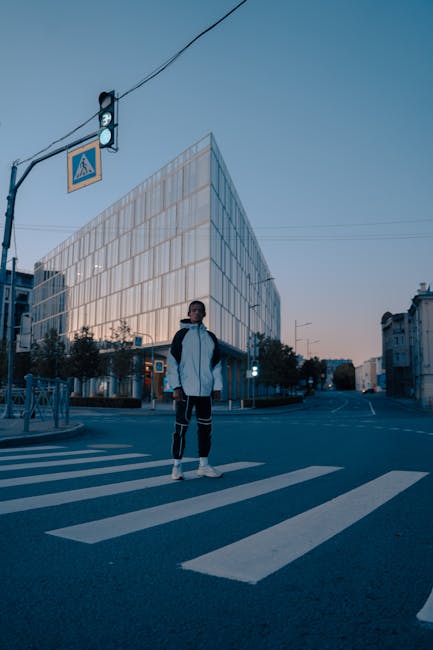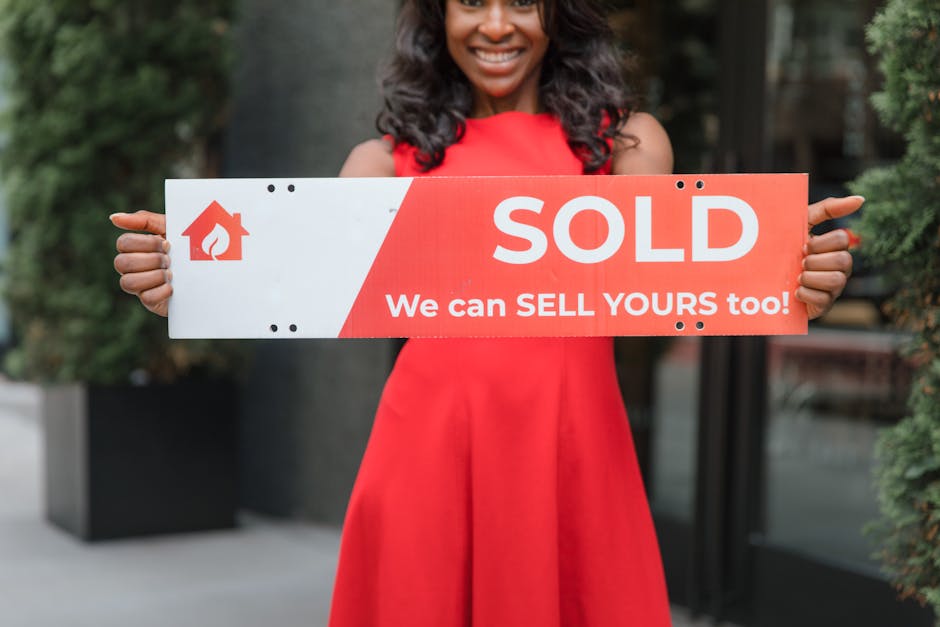How to Run Facebook Ads for Local Businesses: Driving Foot Traffic
- After watching this tutorial, you can be equipped with the skills and confidence needed to generate more awareness and more walk-ins for your local business using Facebook ads. My name is Paul Ramondo, and I'm here to run you through Facebook ad tutorial for your local business so you can generate more awareness and more foot traffic using Facebook ads. Make sure you stick around to the end cause it's gonna be a bonus tip, regarding exclusion targeting for specific geographic areas that not many advertisers know about. So, for today's example, we're gonna be using a fictional restaurant called Paul's Restaurant. Paul's Restaurant is facing a hypothetical dilemma right now.
They do weekend bookings: Wednesday, Thursday, Friday, Saturday, Monday even. But on Tuesday nights, they hardly get anyone in, it's pretty slow night of the week. We wanna target people in the local geographic radius around Paul's Restaurant, with some kind of value incentive offer to get people to come in at the slowest time of the week, on Tuesday nights.
Now even though this is a fictional restaurant and a fictional ad that we're creating today, it's important to remember that these same principles will apply to whatever local business you're running. Let's hop in, here we are in Ads Manager.
And what we wanna do is just go ahead and create a new campaign. So we hit that green Create button there. We'll give it a name, Paul's Restaurant a Tuesday Promo. Alright, and now what we wanna do is go down to campaign objective, and click on store traffic. If you haven't set up your business as a local Facebook page, then you're not gonna have the option of being able to run a store traffic campaign objective.
You're not gonna be able to run Get Directions call to action ads, and it also means that you're gonna have bit more trouble getting the results in which you're trying to achieve. And then we wanna go and select our Facebook Page. I always recommend starting with a low daily budget. So we're gonna go ahead and just change this to $5. For the ad set name, I like to make it related to the audience so let's go, "People within five miles." And then the ad name is gonna be based on what the creative inside that ad is. We're gonna be using, Entree Special Promo. So that way, when you hop into your campaign, you can see, "Okay cool, the campaign name is Tuesday Promo. The ad set name is Targeting People within five miles. And the ad name specifically is Entree Special Promo.
Okay, so we gonna go ahead and hit save to draft.
Now we're gonna go through to the Ad Set and open that up. Click Edit. We wanna go through and choose our Store Page here and then we've got a store set. It's very, very important that we have your local ads set up correctly from your business manager and from your Facebook Page before you hop in and run these ads.
When you do it correctly, you are able to then choose all of the stores and their respective locations. So let's just choose this store, for example. And now what we wanna do, is go down and finish building out our targeting. So 22 to 35, and we're basically targeting an area around the store set. Let's say that you don't already have a local store set set up inside of Facebook.
What you can do instead, is go down to here and target a geographical area instead. So this is now targeting Australia. I've gotten the actual physical location of the geographic area which I wanna target in Western Australia. I'm gonna go through in here. Now, you'll see that it's put a radius around that address's store.
Now you can change this targeting from anywhere between one mile up to 50 miles. If ours run too wide over targeting five miles, its gonna be very ineffective. So, I wanna make this as small as possible. Let's move that down to one mile.
You can see that a potential reach is 27,000 people.
I wanna change this to Manual Placements. This is gonna be a time sensitive offer, that we wanna run during our least profitable time. I wanna run this on Tuesdays and I wanna run it to people that are on their mobile phones in the geographic area of our targeting, recently, within that time frame.
If I was to put say, someone's laptop as a placement or newsfeed on desktop as a placement, probably not gonna be as effective as targeting people on their mobile devices. I'm gonna go down to all devices recommended.
Unclick desktop. Now, it's only gonna show up Facebook News Feed, Instagram Feed, Marketplace and Stories. For the purposes of this tutorial, I'm gonna be ignoring Stories as a placement. But if you'd like to learn the best tips, tricks, hacks and how to use with regards to running Instagram ads stories, go ahead and click the link above. Now you can choose to run your ads to people living in or recently in the location, people who just live in the location, people recently in the location, or people traveling in the location.
I'm gonna be choosing people that are recently in this location. So the last thing we need to do, is set up the budget and schedule for our campaigns. Now, Facebook is always constantly adding and removing features. In a perfect world, I'd be able to add a budget and schedule for this in this area of the Ad Set, and only run it on Tuesdays, from say 11 am through to 6 pm.
If you have the ability to customize your delivery, please do it.
However, for the purposes of this example, I'm gonna run this for two weeks in that geographic location, which will be a great test because it's gonna allow us to stay top of mind and relevant in our target audiences minds. Okay, so now that that's done, X out of here and we can hop into the Ad level . Wanna gonna go through and edit the ad that we're setting up. We've got our Facebook page for Paul's Restaurant selected here. Then you also wanna select the relevant Instagram accounts.
So we'll go through and select Paul's Restaurant. There's this new feature here we can customize the Ad Voice. So you can customize it, whether it's coming from say your big page or whether your local, it's your local page. So I'm gonna choose the main page as the Ad Voice and go through and set up our ad, which is super simple single image or video.
Then wanna go through and go add media.

Add image. Upload an image which I prepared earlier. Now we have the beautiful image of this entree. Okay so here's some creative and copy I prepared earlier, "Enjoy any of our award winning entrees for free when you dine with us between 6pm and 8pm on Tuesday nights. Simply mention this Facebook post to your server to claim." Now one of the biggest challenges a lot of my local business clients face, is tracking real life conversions from a digital spend. Because there's no pixel in real life, it's really hard to work out which ad led to which conversion.
So one way you can do it, is just going super old school, super analog. And this call to action here, "Simply mention this Facebook post to your server to claim." And then getting your actual service at the restaurant in real life to note down, "Cool, tonight we had five people mention the Facebook ad." The conversion rate for that would be five conversions as a result of the ad spend for that night.
When you've got your Facebook local pages set up, you can actually choose the Facebook Location street address and the location city from the back end of Facebook, which is dynamically populated. Now here comes the fun stuff. What I want to happen when people see this offer in their News Feed is, click "Get Directions" in the ad, directing them from their current physical location through to the restaurant itself. All you need to do, is click Open in map as your destination.
And because you've already pre-populated all of your local business information with Facebook Ads Manager in the back end, it's gonna automatically populate your address inside of the ad. Okay, so here we have the final ad with a get directions call to action button. We wanna just double check that the Facebook Pixel is on. And then it's just as simple as going ahead and pressing the green Publish button, and seeing how your first test works at a low daily budget of $5.
Now that we've published the ad, the last thing we wanna do, is just double check that everything is correct.
So I've just hopped back into the ad set level and realized that I left the name of the ad set at "People within five miles." Obviously, we chose to make it one mile only, so I'm just gonna go through and change that ad set name to "Within my one mile." Double check that the ad looks the way that you want it to look. If you wanna see what it looks like in the Facebook feed, click this button here. Go to Facebook Post with Comments, and this is what it looks like, the completed ad.
And you'll see how this bit here has been dynamically populated with the address locations.
And then obviously, you wanna make sure that the directions are working correctly, and you can do that by clicking Get Directions, which will fire up a map in your browser and double check that that is actually leading people to the correct store. Cause the last thing you wanna do, is spend all this money on ads and then direct them to the wrong location. Alright? Double and triple checking your work is very, very important before you go ahead.
And finally go back into Ads Manager, and activate the campaign. Now you think that we're done but let me tell you fam, we've got some more exciting stuff in store. Let's say that you run this ad for like two weeks. You're getting really decent impression, really decent reach, but the ads just aren't converting. It might be because your location mapping is off.
What we can do is actually exclude areas from our targeting inside of the Ad Set so that we have more of relevant targeted audience area when we're running our ads.
Oh, it's so fun. Let's do it. We go back into our Ad Set area and we click on the Edit button. And now we wanna go down to the locations that we're targeting.
This is actually a shopping center, right? So what you wanna do is zoom in. Now, this is the actual shopping center. So let's say that we only want to target the people that are actually physically inside this shopping center and this store's location.
But how do we do that, when the maximum radius that we can tie it is one mile?
Well, we use these exclusion pins. So we drop a pin. Drop it anywhere in the map. What you wanna do, is drop it say, here. That's gone through and added a pin at this latitude and longitude.
I'm gonna decrease the pin size to one mile, like this. And then, we want to click this drop down button here, and go Exclude Location. So now that you can see this red radius area, and you can see this Venn diagram here.
It's excluding this audience from being targeted. And then all we have to do, is simply go rinse and repeat.
Okay, so here is the finished results. You can notice that as I zoom in, all of these areas around the outside are excluded and we're only targeting that nice little blue Venn diagram area in the middle. Now, you'll also notice that the potential reach has gone from about 27,000 people, down to 12,000 people. If you have a really highly populated area, this is fantastic. However, if it's less densely populated, this may not be the best strategy for you.
So the other really cool thing about this strategy is that you can use it to target your audiences wherever they may be at a certain point in time. So think about events. Let's say, there's a baseball game going on next weekend, and your bar that's located close to where the baseball game is. You can run ads promoting, say, "Postgame happy hour to everyone attending that baseball game in that geographic location." In an effort to drive more foot traffic and awareness of your bar to a relevant audience that's ready to drink.
Okay, now that we've successfully completed our Facebook local ads set up, we might wanna learn how to target them to Instagram story ads. My colleague Susan has the perfect tutorial for you, which I recommend checking out right now..
https://baez5058--mommakingmoneyathome.thrivecart.com/18-pages-journaling-pages/
Thanks for your visit!
https://youtu.be/CRDN3QkZY9A
https://bit.ly/3xk5UTx



